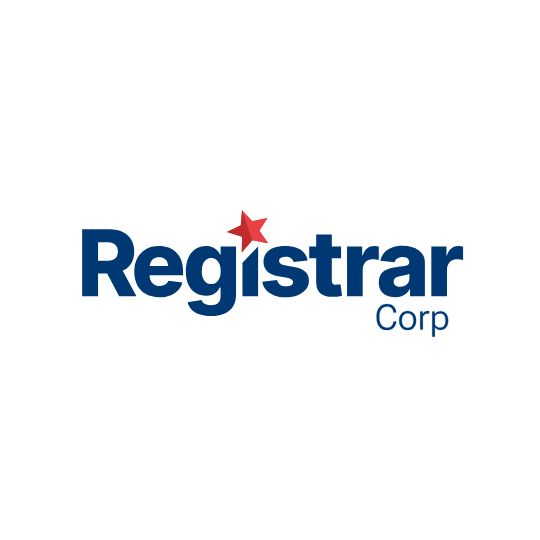ISO 22716 is the internationally recognized standard for Good Manufacturing Practices (GMP) in the cosmetics industry. It outlines comprehensive guidelines for ensuring that every stage of the production process, from raw materials to finished goods, meets the highest standards of safety, quality, and consistency. Among its most critical components is the Quality Control rule, a detailed framework designed to prevent defects and ensure that cosmetic products meet both regulatory and consumer expectations.
The Quality Control rule is not merely about testing finished products—it governs every step of the process, requiring stringent checks, documentation, and continuous monitoring. By adhering to this rule, manufacturers can confidently produce cosmetics that meet ISO 22716 standards while safeguarding their reputation and the safety of their consumers. This article delves into the core aspects of ISO 22716’s Quality Control rule, breaking down its significance, implementation strategies, and impact on regulatory compliance and consumer trust.
What Is the Quality Control Rule in ISO 22716?
The Quality Control rule within ISO 22716 represents the backbone of safe and consistent cosmetics manufacturing. By focusing on stringent monitoring, verification, and documentation, this rule ensures that products consistently meet established specifications. But what does this mean in practice? Let’s explore the role of Quality Control in maintaining the integrity of cosmetic products and the steps involved in ensuring compliance with ISO 22716 standards.
Defining Quality Control in Cosmetics Manufacturing
Quality Control (QC) in the cosmetics industry involves systematic processes that verify the safety, quality, and compliance of products at every stage of their lifecycle. This extends beyond the final inspection to encompass raw material testing, in-process monitoring, and finished product evaluation. ISO 22716 emphasizes that QC is not just about finding defects but preventing them, ensuring that every product aligns with defined specifications.
Key Objectives of the Quality Control Rule
The Quality Control rule in ISO 22716 aims to:
- Prevent Contamination and Defects: Stringent measures are in place to mitigate contamination risks and ensure that products are free from physical, chemical, or microbiological hazards.
- Ensure Consistency: By maintaining batch-to-batch uniformity, QC helps uphold brand integrity and consumer trust.
- Meet Regulatory Standards: QC provides the documented evidence required to demonstrate compliance with local and international regulations.
The Role of Documentation in QC Compliance
Accurate and traceable documentation is essential for demonstrating adherence to ISO 22716. Key aspects include:
- Detailed records of testing procedures, results, and corrective actions.
- Comprehensive documentation of materials, suppliers, and production steps.
- Integration of QC data into broader GMP compliance systems to ensure consistency and traceability across the supply chain.
Key Components of ISO 22716 Quality Control Processes
ISO 22716’s Quality Control rule outlines a comprehensive approach to ensuring product safety and consistency, starting from the sourcing of raw materials to the final release of finished goods. Each stage is designed to systematically detect and address potential issues before they compromise product quality. Below, we’ll break down the critical components of the Quality Control process and how they safeguard the integrity of cosmetics manufacturing.
Raw Material Testing: Setting the Foundation for Quality
The quality of raw materials directly impacts the safety and performance of the final product. Under ISO 22716, manufacturers are required to:
- Verify Raw Material Identity: Ensure that materials received match their specifications, using identification tests and supplier-provided documentation.
- Check Purity and Safety: Conduct tests to confirm the absence of contaminants such as heavy metals, microorganisms, or allergens.
- Approve Suppliers: Work only with verified suppliers who consistently meet GMP requirements and provide reliable quality certifications.
By maintaining rigorous testing and supplier vetting procedures, manufacturers can eliminate potential quality issues at the source.
In-Process Controls: Monitoring During Manufacturing
Quality Control doesn’t stop at raw materials—it continues during the manufacturing process to ensure consistency and compliance. Key in-process controls include:
- Batch Monitoring: Regular checks during production to confirm that the batch meets defined specifications for pH, viscosity, and other key parameters.
- Environmental Monitoring: Verifying that the manufacturing environment, including air quality and cleanliness, remains within acceptable limits to avoid contamination.
- Equipment Calibration: Ensuring that machinery is functioning accurately to maintain product consistency and minimize variability.
These checks help detect and address any deviations before they affect the final product.
Finished Product Testing: Ensuring Safety and Compliance
Once production is complete, finished products undergo thorough evaluations to confirm their quality and compliance. This includes:
- Physical and Chemical Testing: Assessing properties such as color, odor, texture, and stability to ensure products meet consumer expectations and safety standards.
- Microbiological Testing: Verifying that products are free from harmful microorganisms, especially in formulations like creams and lotions that come into contact with the skin.
- Packaging Integrity: Inspecting packaging to ensure it protects the product from contamination, maintains its shelf life, and complies with labeling regulations.
Finished product testing serves as the final safeguard before the product reaches consumers, ensuring it adheres to both regulatory requirements and brand standards.
Handling Non-Conformities: Corrective Actions and Prevention
Despite rigorous controls, non-conformities may occasionally occur. ISO 22716 requires manufacturers to have processes in place for:
- Identifying and Investigating Deviations: Establishing a root cause analysis framework to determine why the issue occurred.
- Corrective Actions: Implementing measures to address the deviation and prevent recurrence, such as retraining staff, modifying procedures, or upgrading equipment.
- Documenting Actions Taken: Recording all non-conformities, investigations, and resolutions to demonstrate compliance during audits.
By addressing non-conformities promptly, manufacturers can minimize risks and maintain consumer trust.
Implementing ISO 22716 Quality Control: Best Practices for Success
Adopting ISO 22716 Quality Control guidelines requires more than understanding its principles—it demands a strategic and proactive approach to implementation. From building internal expertise to ensuring seamless integration into existing workflows, successful implementation hinges on adherence to key best practices. This section provides a roadmap for integrating ISO 22716 Quality Control into your operations and fostering a culture of continuous improvement.
Building a Foundation with Proper Training
Effective Quality Control starts with a well-informed team. Key actions include:
- Training Programs for Staff: Ensure all employees—from management to operators—understand their roles in maintaining quality and complying with ISO 22716.
- Certification of Quality Personnel: Invest in training and certifying key staff to oversee implementation and internal audits.
- Ongoing Education: Regularly update employees on changes to ISO standards or industry regulations to maintain compliance.
A knowledgeable workforce forms the backbone of a robust Quality Control system.
Aligning Documentation with ISO 22716 Requirements
Thorough documentation is essential for compliance and process clarity. Key steps involve:
- Developing Standard Operating Procedures (SOPs): Tailor SOPs to align with ISO 22716 principles and your specific operational needs.
- Maintaining Detailed Records: Document every aspect of material handling, manufacturing, and quality checks for full traceability.
- Using Templates and Tools: Leverage templates or digital tools to streamline documentation and ensure consistency across processes.
Accurate and accessible documentation simplifies audits and reinforces accountability.
Conducting Regular Internal Audits
Internal audits are critical for monitoring progress and identifying areas for improvement. Best practices include:
- Scheduling Routine Audits: Plan audits at regular intervals to evaluate compliance and operational efficiency.
- Involving Cross-Functional Teams: Engage different departments in audits to gain a holistic view of processes and potential gaps.
- Acting on Audit Findings: Address deficiencies with corrective actions and update procedures accordingly.
Internal audits ensure continuous alignment with ISO 22716 and build resilience against external inspections.
Leveraging Technology for Quality Control
Modern tools and systems can enhance compliance efforts. Consider:
- Automated Quality Monitoring: Implement sensors and software to monitor critical parameters in real-time.
- Digital Documentation Systems: Use cloud-based platforms for easy access and secure storage of Quality Control records.
- Data Analytics for Continuous Improvement: Analyze trends in production and inspection data to identify areas for optimization.
Technology-driven solutions streamline compliance and drive operational excellence.
Fostering a Culture of Quality and Accountability
A successful Quality Control program thrives in a culture that prioritizes quality. Focus on:
- Empowering Employees: Encourage staff to report potential issues and participate in problem-solving initiatives.
- Recognizing Excellence: Reward teams or individuals who contribute to quality improvements.
- Embedding Quality in Values: Align company goals and values with ISO 22716 principles to ensure long-term commitment.
A quality-focused culture sustains compliance and enhances brand reputation.
Building and Maintaining a Robust Quality Control System
A successful Quality Control system under ISO 22716 doesn’t merely consist of testing and inspections—it’s about creating a framework that integrates seamlessly into every aspect of production. From clearly defined roles and responsibilities to robust documentation practices, building and maintaining a Quality Control system requires continuous effort and alignment with Good Manufacturing Practices (GMP). Let’s break down the essential steps to establish a sustainable system that ensures compliance and product excellence.
Defining Roles and Responsibilities
An effective Quality Control system relies on having the right people in the right roles, with responsibilities clearly outlined. Key practices include:
- Assigning Quality Control Personnel: Designating a qualified team to oversee all testing, inspections, and corrective actions.
- Training Programs: Providing ongoing education on GMP requirements, testing protocols, and regulatory updates to ensure staff remain competent.
- Cross-Department Collaboration: Facilitating communication between Quality Control, production, and procurement teams to identify and address potential risks early.
When everyone understands their role, the system operates more cohesively, reducing the likelihood of oversight.
Documentation: The Backbone of Compliance
ISO 22716 emphasizes that “if it isn’t documented, it didn’t happen.” Maintaining thorough and accurate records is a cornerstone of an effective Quality Control system. Critical documentation practices include:
- Recording Testing Data: Logging results from raw material, in-process, and finished product tests to demonstrate compliance and identify trends.
- Documenting Deviations and Corrective Actions: Keeping detailed records of non-conformities, investigations, and resolutions to show regulators that issues are effectively managed.
- Maintaining Standard Operating Procedures (SOPs): Ensuring that clear, accessible SOPs guide every Quality Control activity, from sample collection to batch release.
Proper documentation not only supports compliance but also serves as a valuable tool for continuous improvement.
Internal Audits and Continuous Improvement
Building a strong Quality Control system is only the first step—maintaining and improving it is an ongoing process. Key practices include:
- Conducting Regular Internal Audits: Periodic reviews of Quality Control processes help identify gaps, inefficiencies, or non-compliances.
- Using Audit Findings for Improvement: Treating audits as opportunities to refine practices, update protocols, and train personnel on new procedures.
- Monitoring Trends and Feedback: Tracking patterns in testing data, consumer feedback, and market recalls to proactively address emerging risks.
A commitment to continuous improvement ensures that the Quality Control system evolves alongside regulatory standards and industry best practices.
Overcoming Common Quality Control Challenges
Even with a solid framework in place, implementing ISO 22716’s Quality Control requirements comes with its own set of challenges. From managing supplier inconsistencies to navigating the complexities of multi-step production processes, manufacturers must proactively address these hurdles to maintain compliance and ensure product integrity. In this section, we’ll identify the most common challenges faced by manufacturers and explore practical solutions to overcome them.
Supplier Variability and Raw Material Quality
One of the most frequent challenges is ensuring the consistency and quality of raw materials provided by suppliers. Variability in raw materials can lead to deviations, product recalls, or consumer dissatisfaction. Key strategies to mitigate this issue include:
- Supplier Qualification Programs: Establishing robust criteria for evaluating and approving suppliers based on their ability to meet ISO 22716 requirements.
- Ongoing Supplier Audits: Conducting regular inspections and audits of suppliers to verify their compliance with quality standards and identify potential risks.
- Incoming Material Testing: Implementing rigorous testing protocols for raw materials before they are accepted into production to ensure they meet predefined quality specifications.
By maintaining stringent supplier oversight, manufacturers can minimize variability and its downstream effects on production quality.
Production Complexity and In-Process Control
Manufacturing processes often involve multiple steps and intricate workflows, increasing the risk of errors or non-compliance at various stages. Overcoming these challenges requires:
- In-Process Quality Control: Performing real-time checks and inspections during production to catch deviations early and prevent defective products from advancing to the next stage.
- Automation and Technology Integration: Utilizing automated monitoring systems to reduce human error and ensure consistency across production batches.
- Cross-Functional Training: Educating production staff on the importance of Quality Control and their role in identifying and mitigating risks throughout the manufacturing process.
A proactive approach to in-process controls ensures that deviations are managed before they escalate into larger issues.
Documentation and Traceability
Maintaining comprehensive and accurate documentation can become overwhelming, especially for manufacturers handling multiple product lines or operating at scale. To address this challenge:
- Centralized Document Management Systems: Leveraging digital solutions to organize, store, and retrieve Quality Control records efficiently, reducing the risk of errors and lost data.
- Ensuring Consistent Recordkeeping: Standardizing documentation practices across teams and locations to maintain uniformity and compliance.
- Periodic Documentation Reviews: Conducting regular reviews to identify gaps or inconsistencies in recordkeeping practices and making adjustments as necessary.
Effective documentation and traceability ensure that manufacturers are always audit-ready and equipped to address any compliance concerns.
Handling Non-Conformities and Recalls
Despite best efforts, non-conformities and product recalls may still occur, posing a significant challenge to manufacturers. Addressing these incidents effectively involves:
- Root Cause Analysis (RCA): Investigating the underlying cause of the issue to prevent recurrence.
- Clear Corrective and Preventive Action (CAPA) Plans: Implementing actionable steps to resolve non-conformities and strengthen processes against similar future occurrences.
- Crisis Management Training: Preparing teams with protocols to handle recalls efficiently, minimizing disruption to operations and damage to brand reputation.
With a structured approach, manufacturers can turn challenges into opportunities for improvement, reinforcing the effectiveness of their Quality Control systems.
The Benefits of ISO 22716’s Quality Control Framework
Implementing ISO 22716’s Quality Control framework offers far-reaching advantages beyond regulatory compliance. By adopting these best practices, manufacturers can enhance product safety, streamline operations, and build consumer trust—key factors for long-term success in the competitive cosmetics industry. In this section, we’ll explore how ISO 22716’s Quality Control principles drive tangible benefits for businesses and consumers alike.
Enhanced Product Safety and Consistency
At the heart of ISO 22716’s Quality Control framework is the commitment to delivering safe, high-quality products to consumers. This emphasis provides manufacturers with:
- Reduced Risk of Contamination: By enforcing strict hygiene practices and material controls, the risk of product contamination is significantly minimized.
- Reliable Product Performance: Consistent quality ensures that consumers experience the intended benefits of cosmetics products, fostering trust and satisfaction.
- Fewer Product Recalls: Robust Quality Control systems catch potential issues before products reach the market, reducing costly and reputation-damaging recalls.
A strong focus on safety and consistency safeguards both the consumer and the manufacturer’s reputation.
Improved Operational Efficiency
ISO 22716’s guidelines aren’t just about compliance—they also optimize manufacturing processes. Key operational benefits include:
- Streamlined Workflows: Clear procedures and responsibilities reduce inefficiencies and confusion during production.
- Minimized Waste: By detecting defects early and maintaining tight process controls, manufacturers can reduce material and resource waste.
- Scalable Practices: ISO 22716’s structured approach supports business growth, allowing manufacturers to scale operations without compromising quality.
Efficient operations translate to cost savings and higher productivity, giving businesses a competitive edge.
Strengthened Consumer Confidence and Brand Reputation
In the cosmetics industry, trust is everything. ISO 22716 certification signals to consumers and stakeholders that a brand prioritizes quality and safety. Benefits include:
- Increased Consumer Loyalty: Safe, reliable products foster customer loyalty and positive word-of-mouth.
- Enhanced Market Access: Certification demonstrates compliance with international standards, facilitating entry into global markets.
- Protection of Brand Equity: Effective Quality Control reduces the likelihood of scandals or lawsuits, preserving the brand’s image and value.
A strong reputation for quality builds long-term success in a crowded marketplace.
Simplified Compliance with Regulatory Requirements
ISO 22716 aligns with many global regulations, helping manufacturers stay ahead of compliance demands. Advantages include:
- Easier Audit Preparedness: Comprehensive documentation and controls ensure that businesses are always ready for inspections.
- Reduced Legal Risks: Adhering to best practices minimizes the chances of fines or legal actions due to non-compliance.
- Harmonization Across Markets: Following ISO 22716 helps businesses meet diverse regulatory requirements, reducing the complexity of operating in multiple regions.
Simplified compliance allows manufacturers to focus more on innovation and growth, rather than navigating regulatory hurdles.
Maintaining Compliance with ISO 22716 Quality Control
Achieving compliance with ISO 22716 is a significant milestone, but maintaining it requires sustained effort and adaptability. With evolving regulations, market demands, and operational challenges, businesses must implement strategies to ensure ongoing alignment with Quality Control standards. This section outlines how to sustain compliance and foster continuous improvement in your Quality Control systems.
Staying Current with Regulatory and Market Changes
The regulatory landscape is constantly evolving, and businesses need to stay ahead. Key actions include:
- Monitoring Regulatory Updates: Regularly review changes in local, national, and international regulations affecting cosmetics production.
- Engaging with Industry Bodies: Participate in industry associations to stay informed about market trends and compliance best practices.
- Adapting to Consumer Expectations: Align Quality Control processes with rising consumer demands for transparency, sustainability, and ethical sourcing.
Proactively addressing these changes helps prevent compliance gaps and strengthens market competitiveness.
Continuous Improvement Through Data and Feedback
Maintaining compliance involves refining processes based on insights from data and stakeholder feedback. Best practices include:
- Tracking Key Performance Indicators (KPIs): Measure metrics like defect rates, corrective action timelines, and customer complaints to gauge Quality Control effectiveness.
- Utilizing Feedback Loops: Incorporate input from audits, customers, and employees to identify weaknesses and drive improvements.
- Benchmarking Against Industry Standards: Compare your practices to competitors and industry leaders to stay competitive and compliant.
By leveraging data and feedback, businesses can evolve their systems and maintain alignment with ISO 22716 standards.
Reinforcing a Culture of Accountability
A strong culture of accountability ensures compliance is sustained across all levels of the organization. Focus on:
- Empowering Teams: Assign clear Quality Control responsibilities to individuals and teams, ensuring everyone understands their role in maintaining compliance.
- Conducting Regular Refresher Training: Reinforce ISO 22716 principles through periodic training to address new challenges and maintain awareness.
- Recognizing and Correcting Lapses: Encourage transparency by addressing lapses constructively and rewarding proactive compliance efforts.
Accountability at every level builds trust and sustains a commitment to quality.
Leveraging External Expertise
Sometimes, maintaining compliance benefits from outside perspectives. Consider:
- Hiring Consultants: Engage ISO 22716 experts for periodic reviews and gap analyses.
- Participating in Certification Programs: Renew certifications and seek additional qualifications to bolster your reputation.
- Collaborating with Auditors: Use external auditors to gain impartial insights into your Quality Control systems and identify potential risks.
External expertise complements internal efforts, ensuring robust compliance practices.
Preparing for the Future
Sustained compliance also involves forward-thinking strategies. Prepare by:
- Anticipating Technological Advances: Stay open to adopting emerging technologies, like AI-powered quality management tools.
- Scaling Quality Systems with Growth: As your business expands, ensure Quality Control systems scale to meet increased demands without compromising compliance.
- Incorporating Sustainability Goals: Align Quality Control practices with sustainability initiatives to meet consumer and regulatory expectations.
Positioning your business for the future ensures compliance evolves alongside growth and industry changes.
The Strategic Advantage of ISO 22716 Compliance
ISO 22716 compliance isn’t just about meeting regulatory requirements—it’s a powerful asset that can elevate your business’s reputation, operational efficiency, and market position. By embedding robust Quality Control practices into your operations, you safeguard product integrity and earn the trust of both consumers and industry stakeholders. Let’s explore how ISO 22716 compliance serves as a competitive differentiator in the global cosmetics market.
Building Consumer Trust Through Quality
ISO 22716 certification signals a commitment to high standards, which resonates with increasingly discerning consumers. Compliance:
- Demonstrates Accountability: Assures consumers that products are manufactured under stringent quality guidelines.
- Enhances Transparency: Positions your brand as trustworthy by showing a willingness to adhere to global best practices.
- Drives Brand Loyalty: Builds long-term relationships with customers who value consistent quality and ethical production.
Trust, once established, becomes a key factor in sustaining market growth.
Reducing Risks and Enhancing Efficiency
ISO 22716’s emphasis on robust Quality Control minimizes risks that can disrupt operations and damage reputations:
- Prevents Costly Recalls: Mitigates risks of defective products reaching consumers, saving time and resources.
- Streamlines Processes: Standardized practices reduce inefficiencies, ensuring smoother operations and fewer bottlenecks.
- Improves Decision-Making: Data-driven Quality Control systems allow for informed, proactive decisions.
Operational excellence through compliance translates into better margins and fewer disruptions.
Expanding Market Opportunities
Certification under ISO 22716 opens doors to new markets and partnerships:
- Meeting Global Standards: Facilitates exports and compliance with international regulations.
- Attracting B2B Clients: Retailers and distributors often prioritize suppliers with ISO 22716 certification.
- Enhancing Competitive Positioning: Demonstrates your ability to meet stringent quality requirements, differentiating your brand from competitors.
As regulations become more stringent worldwide, ISO 22716 compliance ensures your readiness for global expansion.
Sustaining Long-Term Success
ISO 22716 compliance isn’t a one-time achievement—it’s an ongoing commitment to quality and continuous improvement. Businesses that embrace this standard benefit from:
- Future-Proofing Operations: Adaptability to evolving regulations and market demands.
- Strengthening Stakeholder Relationships: Building trust with partners, regulators, and customers through consistent adherence to high standards.
- Cultivating a Culture of Excellence: Embedding quality into your organizational DNA, driving success for years to come.
Sustained compliance positions your business as a leader in quality and innovation.
ISO 22716 Quality Control is more than a regulatory requirement—it’s a strategic framework that safeguards your business while enabling growth. By aligning with this global standard, you enhance consumer confidence, minimize risks, and unlock new opportunities in the competitive cosmetics market.
Whether you’re taking your first steps toward compliance or refining your existing Quality Control systems, investing in ISO 22716 is an investment in the future of your brand. Embrace the principles of ISO 22716 to secure a reputation for quality, ensure operational excellence, and gain a competitive edge in the ever-evolving cosmetics industry.
Discover how Registrar Corp can help you comply with FDA and EU Cosmetic Regulations.









